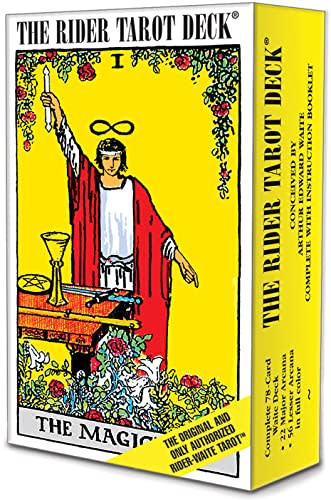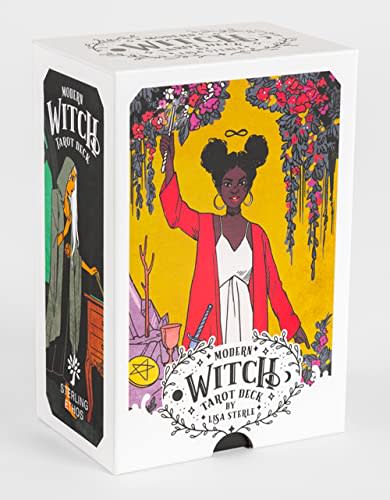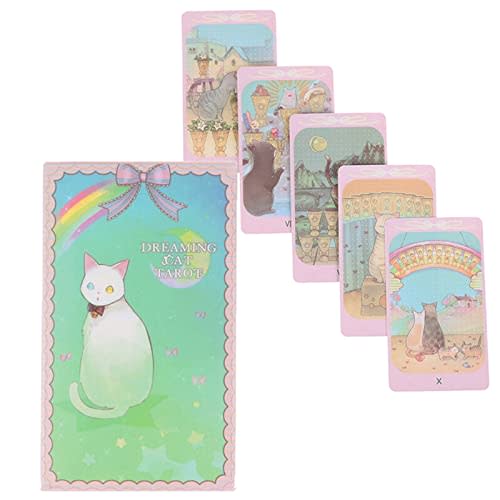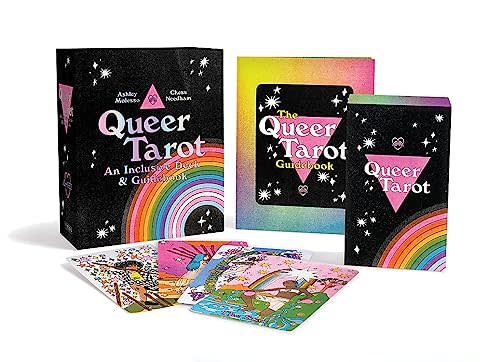What Exactly Is 'Tarot'? Experts Share the History, What the Cards Mean and More

With the more widespread accessibility of the internet, and now the popularity of TikTok, so many niche things are at our fingertips. Because of this, more people are being exposed to spiritual practices and occult topics, which can include tarot. But what is tarot, exactly?
A common TikTok tarot experience involves a user pulling some tarot cards in a video for whoever comes across it, often saying something like, “If you’re seeing this, this message was meant for you.” Then they give a (sometimes weirdly accurate) reading. While that’s a trend and some TikTok tarot readers might not be truly invested in the craft or know what they’re talking about, tarot is a very real thing and has a very long history.
With that long history comes misunderstandings and strong opinions surrounding tarot. For really religious people, they might see tarot as a gateway to evil things while others see it as a gimmick or nonsense. But for those that believe in it, tarot is a great way to “access intuitive information,” tarot reader and best-selling author, Madame Pamita, tells Parade. So with that, let's dive into what tarot is and what you need to know if you’re interested but never knew how to get into it.
The Arena Media Brands, LLC and respective content providers may receive compensation for some links to products and services on this website.
Related: What Is Manifestation? Is It Real and How Do You Do It?
What is tarot?
As Pamita points out—to even begin a conversation about what tarot is, it’s probably good if you know how to say it. Tarot can be pronounced both "TARE-oh" and "tuh-ROW," but the final T is always silent.
Cassandra Snow, tarot expert and author of a few books including Queering the Tarot, tells Parade that it can be used for anything from “meditative prompts to fortune telling—both historically and today.” They said they use it mostly to “help make decisions and plans based on what the metaphysical weather” around them looks like, but tarot itself “has a huge variety of uses.”
You probably have an idea in your head of what a tarot reading might look like; maybe the reader is in a stereotypical fortune-teller costume, maybe you can see the cards and a crystal ball. But what does a real tarot session look like or entail?
“A tarot reader shuffles the cards, then lays them out in a pattern known as a ‘spread,’” Theresa Reed (AKA The Tarot Lady), tarot expert and author with over 40 years of experience in reading tarot and astrology charts, tells Parade. “From there, they look at how the cards are interacting and what story is unfolding. It’s similar to reading a picture book, except your intuition helps determine what is happening.”
As Reed said, the reader spreads out cards and the session begins. But how do they know or interpret what to tell the person seeking out the reading?
“In a tarot session, a question is asked and the tarot reader deals the cards at random,” Madame Pamita—author of books like Magical Tarot and the guidebook for The Silver Acorn Tarot—says. “The reader then interprets the images, symbols and other details of the cards to provide helpful spiritual guidance.”
She notes, for instance, if someone is coming to a tarot reader asking for help in their love life, a Lovers card is going to be interpreted as something different than if the Lovers card was pulled during a tarot reading about their career or other partnership.
In addition to the general meanings of the cards, the position they’re pulled in also matters. One card could mean one thing, but if it’s pulled upside down, it means something else. They go into the “spread” or “layout” the tarot reader is setting out to give their client the answers they seek. This spread or layout can look different too.
“A simple example of a spread might be three cards placed in a row representing the past, present and future,” Madame Pamita says. “The card placed in each of these positions would indicate something that happened in the past, something that is happening right now, and possibilities for the future, respectively.”
She says that she thinks of tarot as telling a story and the tarot reader as the storyteller, to give an easy-to-understand explanation.
Related: 444 Angel Number Meaning in Numerology
How many cards are in a tarot deck and what do they mean?
A tarot card deck is obviously not the same thing as a regular deck of cards. There are 78 cards in every tarot deck and there are two different sections they’re categorized into: the Major Arcana and the Minor Arcana.
“The Majors consist of 22 cards, each one depicting a major lesson or step on the Fool’s Journey. They are also associated with fate, or the things that seem outside of our control,” Reed says. “The Minor Arcana has 56 cards, and they represent themes for our day-to-day lives, such as work, money, conflicts and relationships. We have a say in these situations.”
There are a lot more cards in the Minor Arcana than there are in the Major Arcana, and they’re broken down even further. “Within the Minors, you’ll also find four suits,” Reed shares. “Wands, Cups, Swords and Pentacles, as well as Court cards (Page, Knight, Queen, King) for every suit.”
The Rider Tarot Deck®
The Modern Witch Tarot Deck (Modern Tarot Library)
mrdiyshisha Dreaming Cat Tarot Deck, 78 Cute Tarot Cards for Beginners, Pocket Size (4.06" x 2.36")
The Queer Tarot: An Inclusive Deck and Guidebook
Related: 20 Full Moon Rituals To Manifest Your Best Life
Where did tarot come from?
While there are misconceptions about tarot—which we’ll get into—and there are stereotypes, just like anything else, tarot came from somewhere. Reed—who has a new book coming out in October called The Cards You’re Dealt: How to Deal When Life Gets Real - A Tarot Guidebook—shares that the earliest tarot decks go all the way back to 1400s Italy.
“At that time, they were hand-painted, which meant only the wealthy could afford them,” Reed says. “The oldest surviving tarot cards are the Visconti-Sforza, which can be seen at the Academia Carrara in Italy and the Morgan Library and Museum in New York. Once the mass printing press was invented, tarot became more accessible.”
But in this iteration, tarot cards weren’t used in the way we associate them today; Reed shares that they were a “trick-taking” or gambling game called Trionfi, Tarocchini or tarocchi. This form is still played today in parts of the world.
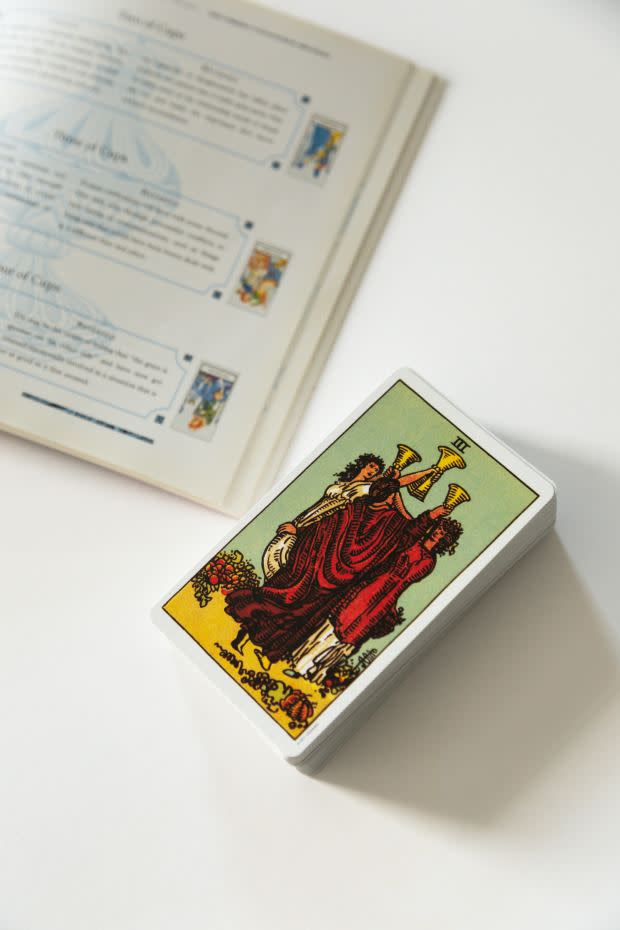
Viva Luna Studios/Unsplash
Using tarot cards as a divination tool didn’t come about until the 1700s when Jean Baptiste-Alliette, known by the pseudonym Etteilla, published one of the first books on tarot being used in this way. “This created a lot of buzz,” Reed says. “And tarot became more known for fortune-telling ever since.”
Snow also points out that the Romani people—an oppressed and nomadic group of people—helped spread the use of tarot as a divination tool and the card game itself.
“The Romani influence on the deck is really important, and often completely ignored, so I try to bring it up whenever I can,” they say. “For a variety of reasons, including this, the tarot as fortune telling really caught fire.”
To get to where we are today with tarot, all three of our tarot experts note that the Rider-Waite-Smith (RWS) deck is what the current iteration of the “modern” tarot deck looks like or is based on. The mystic Arthur Waite of the Golden Dawn—a British group of occultists—hired Pamela Colman Smith to design and illustrate a new deck for the Minor Arcana and heavily influenced the designs we see today.
Related: The Best Crystals For Finding Love, Romance, and Marriage
How to find a real, legit tarot reader?
If you find yourself wanting to get a tarot reading, how do you find a legit tarot reader and skip all of the scammers? Madame Pamita notes that you should find a reader who offers face-to-face readings, whether that's virtual or in-person. If they refuse this or don't offer it as an option, they might be trying to play you (it's easy to give someone generalized advice and not actual readings if it's done just through written communication).
Reed also shared some warning signs that you might be dealing with a scam artist instead of a real tarot reader on her website a few years ago. She writes that if you get to the reading and the reader is asking a ton of questions, they're actually just fishing for things to tell you that you'll relate with, not doing a reading. It's their way of inconspicuously gaining information from you so that when they draw cards, they can fake what it says or what it could mean in relation to you. While it's good to have a list of topics you want to focus on or questions you need answers to, a legit tarot reader won't need a lot of information to deliver a helpful reading.
She also writes that if they're really badgering you to get a reading after first contacting them or if they have "dubious marking"—like promising to tell you special info or that a reading or message has a deadline—they're probably scammers. Reed also notes that if a tarot reader tells you anything about being cursed or having negative energy put on you, they're definitely a scam.
Lastly, if a tarot reader tries to "swear you to secrecy" or charge you an obscene amount of money to "heal" you, run away.
Related: The Best Coffee Order for Your Zodiac Sign
Misconceptions about tarot
As stated before, there are misconceptions about tarot. Potentially stemming from the early fortune-telling aspect, a lot of people see it as fraud, fake or nonsense. Others might see it as evil or witchcraft. But Reed prefers to refer to it as a tool.
“Tarot is 78 paper cards. It’s neutral. It’s a tool, and your intention is what matters,” Reed shares. “Any tool can be used for good or bad. For example, a hammer can be used to hang up a pretty picture. It can also be used to damage property.”
And as Madame Pamita also notes, we don’t see people freaking out about hammers. She also said that tarot isn’t very everyone and that’s the special part about it.
“The people who seem most open to it are usually creative, adventurous and open-minded,” Madame Pamita says. “Those who feel most comfortable with a set of rules imposed on them are probably never going to be interested in tarot and that is totally okay.”
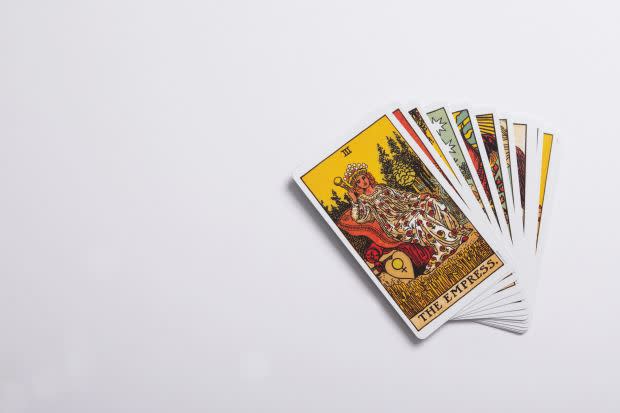
Viva Luna Studios/Unsplash
In terms of witchcraft, Snow points out that tarot is not inherently tied to that practice, especially since it started out as artwork and a table game. But since there is overlap between tarot and witchcraft for some readers, as well as overlap with divination and fortunetelling, tarot can be off-limits for people of certain religions or beliefs.
Firstly, divination is the practice of seeing the future or uncovering "hidden knowledge by the interpretations of omens or by the aid of supernatural powers," per the Merriam-Webster Dictionary. As tarot reader and artist Tiffany Lee Brown has written on her website, some religions specifically don't allow divination. And while the Bible warns against divination, sorceresses, mediums and more, tarot is also used as just a meditation tool. Brown even explores different aspects of the Bible that could be interpreted to allow for tarot and astrology (the Three Wise Men following a star to find Baby Jesus, for example).
As our tarot experts have explained, tarot is commonly used as an intuitive device; I myself have pulled tarot cards when I'm having a really hard time in my personal life or in my professional one. Sometimes I just want guidance and insight into my current feelings, because they can be overwhelming and hard to interpret on their own. Tarot used as a mediation or intuitive tool doesn't coincide with divination and is actually something that Christian mystics talk about.
Christian mystic Valentin Tomberg anonymously wrote Meditations on the Tarot, which was published in 1980 after his death. It looks at tarot not as a fortunetelling device, but instead “primarily for its archetypal imagery,” according to Carl McColman, a spiritual director, retreat leader, speaker and teacher on mystical spirituality.
“Each image is presented as a tool for meditation — for interior reflection and intuition, to enable the reader to foster ever-deepening openness to prayer, meditation, contemplation, and the recognition that we are all created in the image and likeness of God — of Divine Love."
But if divination, specifically, and witchcraft give you pause, you can find a reader that fits with your religion (or no religion at all). If you can't find one from your specific religion (because it's strictly not allowed, or you just can't), finding one that aligns with what you believe or who doesn't have beliefs that conflict with yours is a good route to go.
Where to start with tarot
If you want to get started with tarot, either as a reader or getting a reading, it still might feel overwhelming. Where do you even start? Madame Pamita suggests doing your own research, getting a reading done and talking to a reliable reader. She also says to go to a bookstore or metaphysical shop and look around at the deck options if you’re interested in tarot reading. There are even classes, conventions and meet-ups for tarot.
“The world of tarot and tarot readers is vast and there is so much fun and insight to be had,” Madame Pamita says.
As Reed notes, tarot is so many things nowadays for different people. While some people bullet journal, read horoscopes or ask their friends for advice, other people turn to tarot to make sense of life.
“Tarot is not stagnant. It’s always evolving. Nowadays, people use the cards for therapy, self-reflection, journaling, creative inspiration and more,” she says. “Even fashion designers have used tarot as a muse! Who knows what the future of tarot will be? I guess we have to ask the cards!”
Next up, if you've tried your hand at tarot and want more spiritual awareness, try these 13 crystals.
Sources
Madame Pamita (she/her) is a Ukrainian-American witch, teacher, best-selling and award-winning author, candle maker, spellcaster, and tarot reader. She is also the proprietress of the online spiritual apothecary, the Parlour of Wonders (on her website) and lives in Santa Monica, California.
Cassandra Snow (they/them) is a writer and tarot expert who’s written three books: Queering the Tarot, Queering Your Craft: Witchcraft From the Margins, and Lessons From the Empress co-written with Siri Vincent Plouff.
Theresa Reed (she/her) is a tarot expert and author who has been reading tarot and astrology charts for over 40 years. She’s written several books about tarot, and her newest book drops on October 2nd: The Cards You’re Dealt: How to Deal When Life Gets Real - A Tarot Guidebook.
